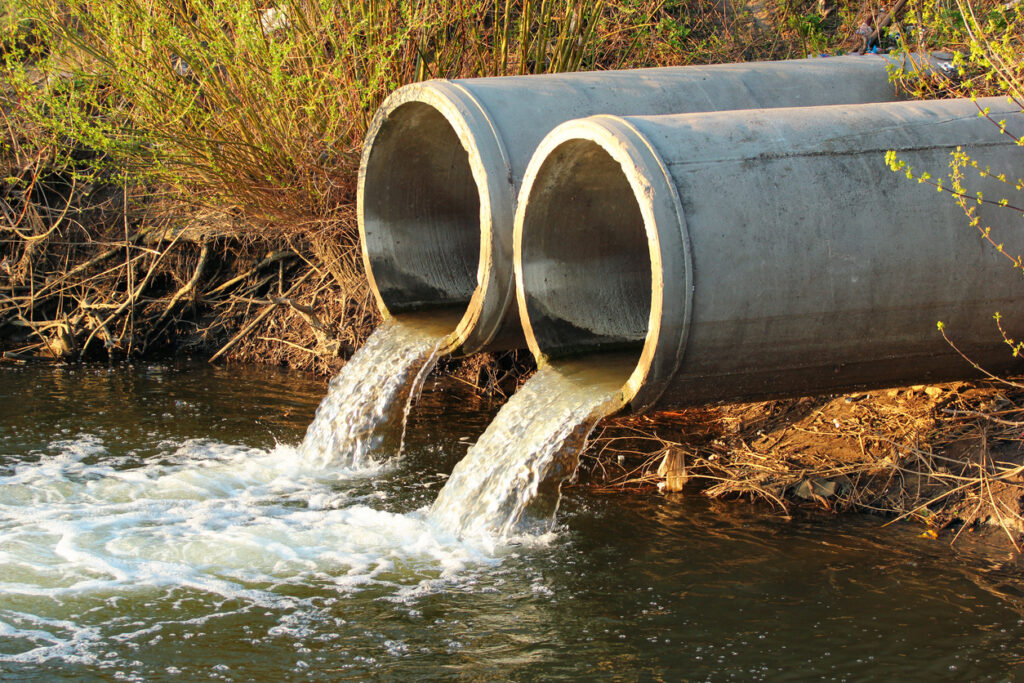Interesting article on the Guardian website recently regarding sewage. Apparently, English water companies have made a public apology regarding sewage spills and committed to spending £10bn over the next decade to reduce spills to rivers and seas. This is a big problem and is getting a lot of publicity at the moment in the UK. Apparently there were 301,901 sewage spills in 2022 which works out at being an average of 824 per day. That’s a lot of spills! A significant problem with sewage is that during periods of heavy rainfall sewage is diverted from sewage treatment works directly into rivers and seas.
The problem with sewage
Sewage is arguably the most significant water pollutant of the lot. In the UK around 11 billion litres of sewage are produced every single day. This originates from numerous sources such as homes, business and rainwater. But not only is there a lot of sewage to deal with, it also consists of a number of nasty pollutants. Common pollutant occurring within it are:
- Nitrogen and phosphorus – this promotes the growth of plants, such as algae, which when they die are consumed by bacteria which strip oxygen from the water. A process known as eutrophication.
- Suspended solids – this will cover plants and animals that live within a watercourses, prevent plants from growing (as they need light to live) and may consist of toxic microorganisms.
- Organic materials – faecal matter and food wastes etc have an ability to be broken down by bacteria. While doing so they strip oxygen from the water leaving it very low in oxygen. Unpolluted water already holds 20 times less oxygen than a litre of air. Such oxygen stress can severely affect what can live in the water.
- Solid materials – sewage will consist of all sorts of solid materials such as litter which can be deposited on the shore and banks of rivers.
- Toxic materials – sewage consists of trade effluent from industry, although there are limits on what can be sent to a public sewer, toxic materials such as heavy metals, pesticide residues and oil are common constituents of sewage.
What can be done
Much can be done to reduce the risk from sewage pollution of rivers and seas. Surges in rainwater can be stopped by new facilities. The capacity of sewage treatment works can be increased so that they are less likely to overflow. Rainwater can be prevented from entering the sewage treatment network reducing the volume of sewage. Pipes from properties are sometimes wrongly connected so that discharges directly enter surface water rather than the sewerage system.
Such actions require a significant investment. As we considered earlier £10bn is planned to be spent on these improvements over the next decade, but even this significant investment will not stop all spills with the target being a reduction in overflow incidents of up to 140,000 a year by 2030, compared to 2020. There will therefore still be an estimated 161,091 spills every year even with the planned investment. Where the money comes from for these upgrades is obviously an important question to ask! It seems like initially shareholders will fund the upgrades but these costs will be gained from customers who will see their bills increase at a time when the cost of living is already very high.
Final Note
Sewage pollution in rivers is a key environmental issue and one that is generating a great deal of publicity. The amount and constituents of sewage mean that it has a high environmental risk. Much can be done to prevent sewage pollution, but the cost is significant. Surely, this is a price worth paying to improve and protect our rivers and seas.
John Binns BSc (Hons), MSc, MIEMA

With over 19 years’ experience working in environment management, John Binns BSc (Hons) MSc MIEMA is an experienced environmental tutor and consultant
